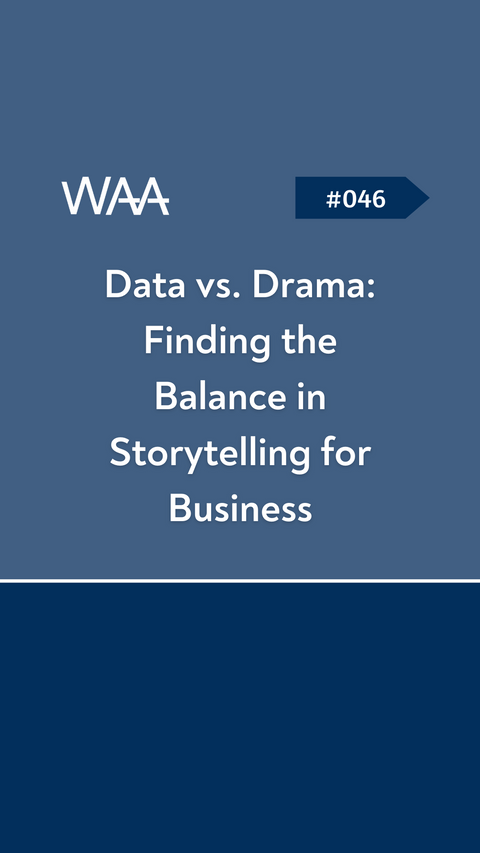
#046 Data vs. Drama: Finding the Balance in Storytelling for Business
Introduction:
Storytelling has become an integral part of business strategies, enabling brands to connect with their audience on a deeper level. However, finding the right balance between data-driven insights and engaging narratives can be a challenge for businesses. While data provides credibility and evidence, storytelling adds emotion and relatability. In this blog post, we will explore the importance of storytelling in business, the role of data and drama in effective storytelling, and strategies to find the perfect balance for your brand.
The Power of Storytelling in Business:
Effective storytelling is a powerful tool for businesses to engage their audience, differentiate themselves from competitors, and build a strong brand identity. It allows businesses to connect with customers on an emotional level, creating a lasting impact and fostering brand loyalty. By crafting narratives that resonate with their audience, businesses can make their products or services relatable, memorable, and meaningful.
The Role of Data in Storytelling:
Data plays a crucial role in business decision-making, providing insights, trends, and evidence to support strategies. When incorporated into storytelling, data adds credibility, reinforces key messages, and helps build trust with the audience. Data-driven storytelling allows businesses to communicate their expertise, showcase industry knowledge, and back up claims with solid evidence. It provides a foundation for the narrative, giving it substance and relevance.
The Power of Drama in Storytelling:
While data provides logical reasoning, drama provides an emotional connection. Dramatic storytelling captivates the audience, eliciting emotions, and creating a more immersive experience. By incorporating conflict, suspense, and relatable characters, businesses can create narratives that resonate with their audience, making their brand more memorable and engaging. Drama adds excitement, evokes curiosity, and helps generate a deeper connection with the story and the brand.
Finding the Balance:
Finding the balance between data and drama is essential for effective storytelling in business. Here are some strategies to achieve the right equilibrium:
-
Know Your Audience:
- Understand your target audience's preferences, interests, and needs.
- Use data to segment your audience and tailor your storytelling approach accordingly.
- Strike a balance between presenting factual information and crafting emotionally appealing narratives.
-
Start with a Strong Data Foundation:
- Gather relevant data and insights to support your message and establish credibility.
- Use data to identify pain points, challenges, or industry trends that your audience can relate to.
- Present data in a visually appealing and easily digestible manner to capture attention.
-
Craft Engaging Narratives:
- Develop compelling storylines with relatable characters and conflicts that align with your brand values and audience interests.
- Use storytelling techniques like suspense, humor, or personal anecdotes to create emotional connections.
-
Use Data to Reinforce and Validate:
- Integrate data points strategically throughout your narrative to support claims and strengthen your message.
- Highlight the impact of your products or services through data-driven success stories or case studies.
Conclusion:
In the evolving world of business, storytelling has become a vital tool for brands to engage their audience and differentiate themselves from competitors. Finding the right balance between data-driven insights and engaging narratives is crucial to creating impactful storytelling for business. By incorporating data to establish credibility and evidence, and combining drama to create emotional connections, businesses can build a brand that resonates with their audience, drives engagement, and generates loyalty. By finding the equilibrium between data and drama, businesses can effectively deliver their message, foster connections, and achieve their marketing goals.
